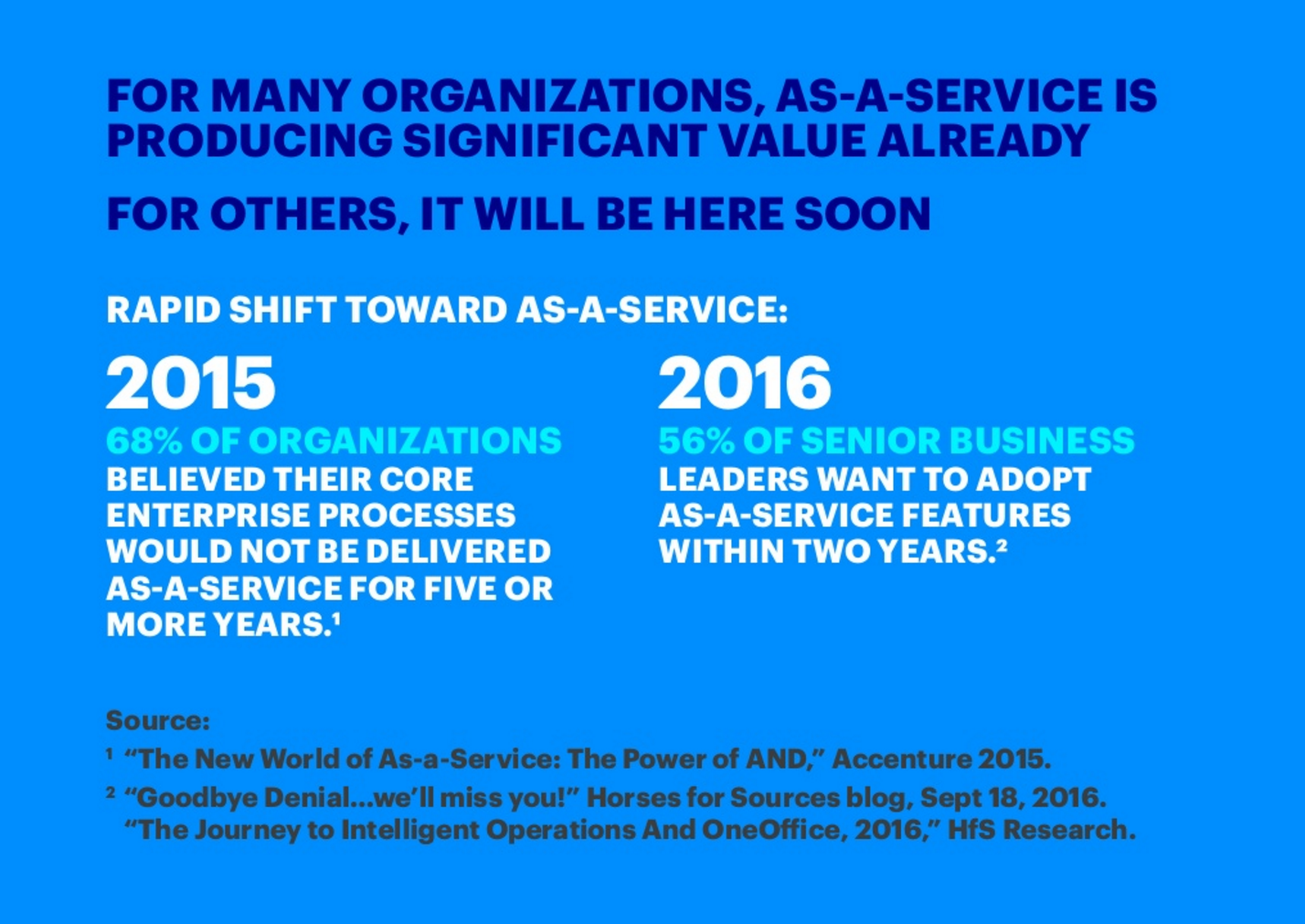
Through cloud adoption and cloud migration, many companies are realizing the benefits of adopting anything-as-a-service (XaaS). There are real cost benefits to XaaS, but software experts notice enterprises are running into the same challenges and making the same mistakes when it comes time to adopt these models. For these companies, it’s their management practices, their culture, and how they think about design and development that ultimately keep them from bringing products to market as a service.
This model is not new, but many companies are just now beginning the process of becoming service providers, according to a survey from Accenture. This report found that 68 percent of organizations wouldn’t be prepared to deliver their core processes-as-a-service until 2020, which ultimately means companies are just now entering the early phases of planning for XaaS.
Companies are also beginning to look into adopting XaaS models because the market is demanding it, said Patric Palm, CEO and co-founder of Hansoft and Favro. According to Palm, the market is demanding it because customers want to pay for what they use and they want to have customer value immediately. By definition, the XaaS model gives the customer that value, he said.
In order to be successful when adopting XaaS, companies need to be adaptable and agile, said Palm. This goes for all parts of the organization, down to the developers and the up to the business leaders. This is where Palm sees companies making mistakes. Enterprises need to not only change their business model to become flexible and agile, but they also need to continue to develop a product or service so that in each release, it’s delivering something valuable to the customer.
Another mistake he highlights is when companies move to an XaaS model and change to a subscription plan for their customers, marketing continues to drive monolithic campaigns. “They are paying for the service continuously so you need to build a relationship,” said Palm. “Product management might be more agile, but marketing is staying in their old tracks.” Palm said there is a difference between simply releasing a product and having a campaign, as compared to having continuous and ongoing relationships with the community.
Another challenge is sometimes, “management doesn’t get it,” said Palm.
“It’s common for big companies to not get it, they make long-term plans, they don’t think about consequences for the whole business,” said Palm. Essentially, it’s not the executives that need to become agile, it’s the whole business.
The three repeating challenges Chris Shinkle, director of innovation at SEP, has noticed stem from culture, design and development and operations. He said that a lot of companies think that XaaS is going to magically change everything, but they fail to realize they need to change the way they think and approach this model.
The companies that want to truly take advantage of XaaS models and its benefit need to change their mindsets, and this includes developers and even management, who need to change the way they think about budgeting and scheduling work. All of this impacts how teams go about developing products and shipping software, he said.
In some large companies, Shinkle notices that all their teams, their customer support, and their marketing teams are all disconnected from the rest of the business. For Software-as-a-Service products, for instance, these teams need to be much more integrated and overlap. When moving to an XaaS, taking care of the customers and providing a great experience is most important, said Shinkle.
“In a traditional model, where I might be selling large applications [and] spending hundreds of thousands of dollars on software, that’s very much different from a service model, which is more subscription based,” said Shinkle. “If I’m not delivering great service, they’re going to leave.”
Additionally, customer support plays a huge role in both sales and XaaS models. If there isn’t a great customer support system in place, and the company is not helping customers use the product and realize the value they are going to get through the product, then they aren’t going to renew their subscription when it comes time to sign up, said Shinkle.
“Culturally, you need to think about how that organization operates and [working] closer together is key,” said Shinkle. “Organizations think SaaS is just a technology change and it’s just software moving from a hard drive to the web or cloud, and they don’t think about managing projects, and what sort of metrics or KPIs are important.”
This is really where companies fall short and struggle, said Shinkle. Often times, the technical challenges of XaaS are not the most difficult parts to solve; it’s the people working to sell products to consumers that is a challenge. He recommends companies think about these cultural changes internally and recognize that if they get closer to their customers, they can learn from them and better provide a service or product.
“If [this] is overlooked, you are setting yourself up for failure,” said Shinkle.






